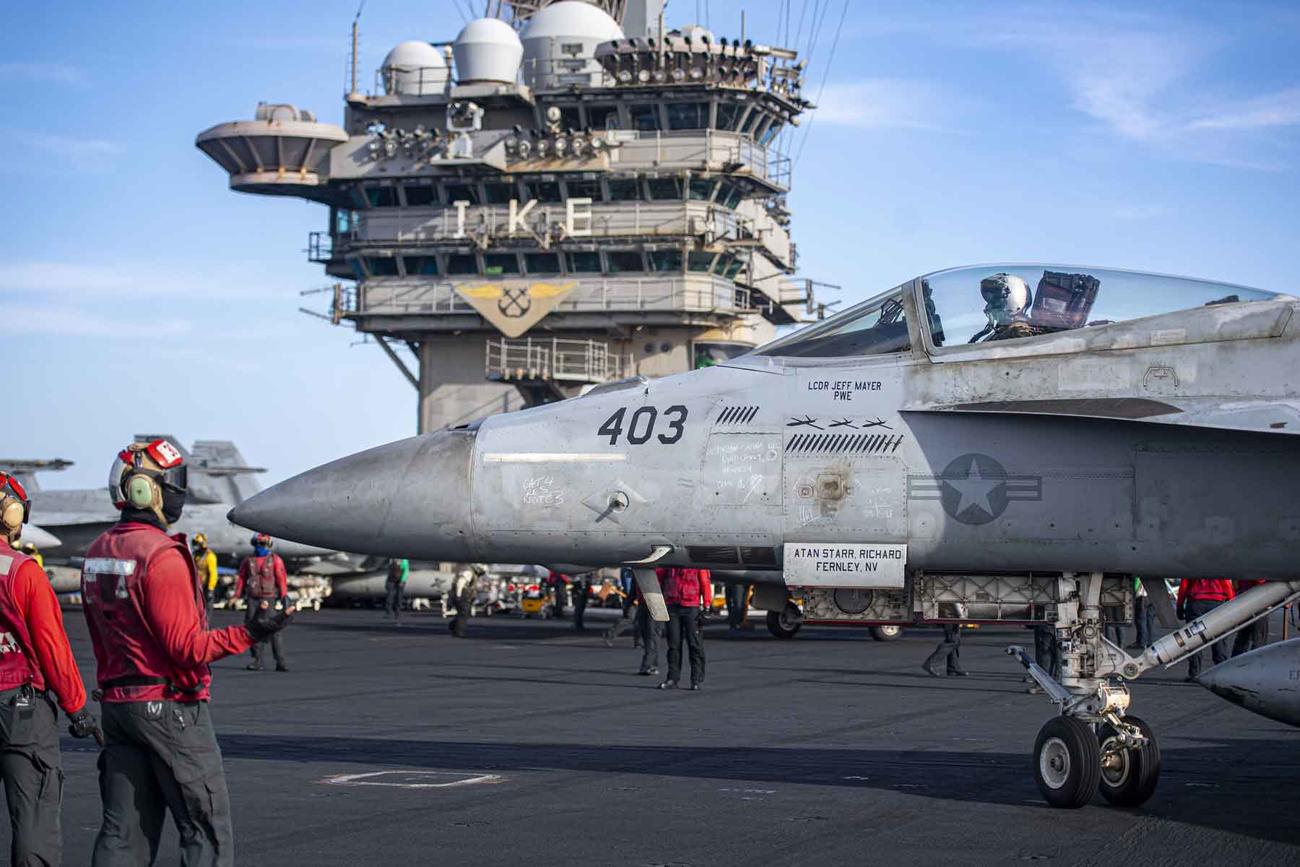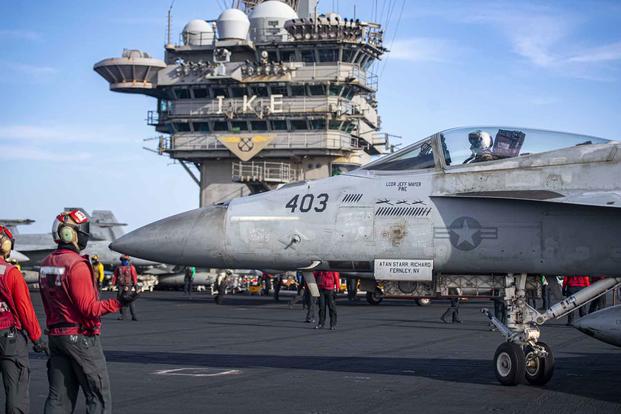

The Pentagon said Monday it remains confident that it will be able to respond to ongoing Houthi attacks in the Red Sea after a Navy aircraft carrier strike group departed the region and it was unclear when another carrier group might arrive.
“We still have capability in the region,” Pentagon spokesman Maj. Gen. Pat Ryder told reporters. The Navy will “continue to work very closely with our international allies and partners toward that end when it comes to safeguarding the flow of commerce and safety of mariners in the Red Sea.”
On Saturday, Ryder announced that the USS Dwight D. Eisenhower strike group, which has been deployed for more than seven months after two extensions, left the area where Houthi rebels have for months attacked commercial shipping and sailed into the Mediterranean Sea. The USS Theodore Roosevelt carrier strike group will eventually take its place in the region.
However, the Theodore Roosevelt, which is currently deployed in the Pacific, will not begin its journey west until next week, after it completes an exercise, Ryder said, leaving the Navy’s presence in the Red Sea at reduced levels – just two destroyers – until its arrival.
The gap comes as Houthi attacks, which began last November following Israel’s bombardment of Gaza in response to a Hamas terrorist attack on Oct. 7, have become increasingly effective.
In the last several weeks, Houthis used a drone vessel to successfully strike a commercial ship. The U.S. Navy had to evacuate the ship’s crew and the vessel later sank. One merchant mariner from the crew went missing amid the attacks.
The Houthis also struck another cargo ship with two separate missile attacks that caused fires and serious injuries to a crew member. That crew also abandoned ship after they lost the ability to control the fires, and they were picked up by another merchant vessel.
As a result, maritime analysts have noted that the attacks are expected to not only increase the cost of shipping goods through the Red Sea but have also resulted in a sharp drop in the amount of merchant traffic in the region.
Earlier in June, a Defense Intelligence Agency report on the Houthi attacks found that they had “harmful impacts” on at least 65 countries and 29 major energy and shipping companies, and also “endangered crews, damaged regional security, impeded international humanitarian relief efforts, threatened freedom of navigation, and increased the cost and transit times for commercial shipping.”
With the Eisenhower and its three-ship strike group in the Mediterranean, the Navy’s presence in the Red Sea is now down to two destroyers, the USS Laboon and USS Cole, a service official said.
Ryder noted that the Navy also has destroyers deployed in the European theater that “have been very active in providing those kinds of defenses, as well as other capabilities to include aircraft and [surveillance and reconnaissance] capabilities.”
When the Roosevelt arrives in the Middle East, the carrier will bring four other ships with it, a Navy official said. However, neither the Navy nor Ryder were able to say when that would happen.
“I’m not going to get into specific days,” Ryder told reporters.
Related: Navy Gave Combat Action Ribbon to 7 Ships as More Details of Red Sea Combat Emerge
